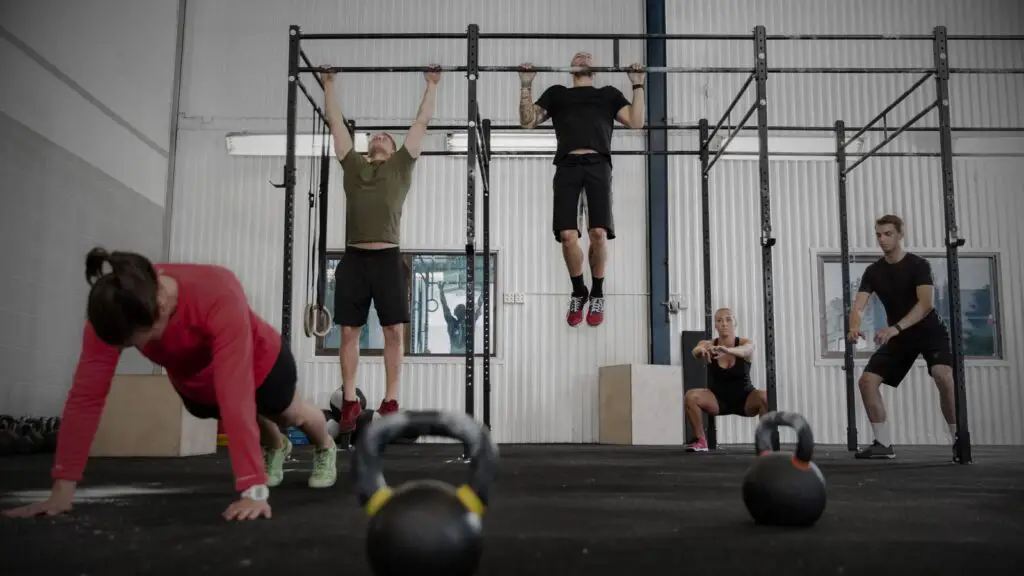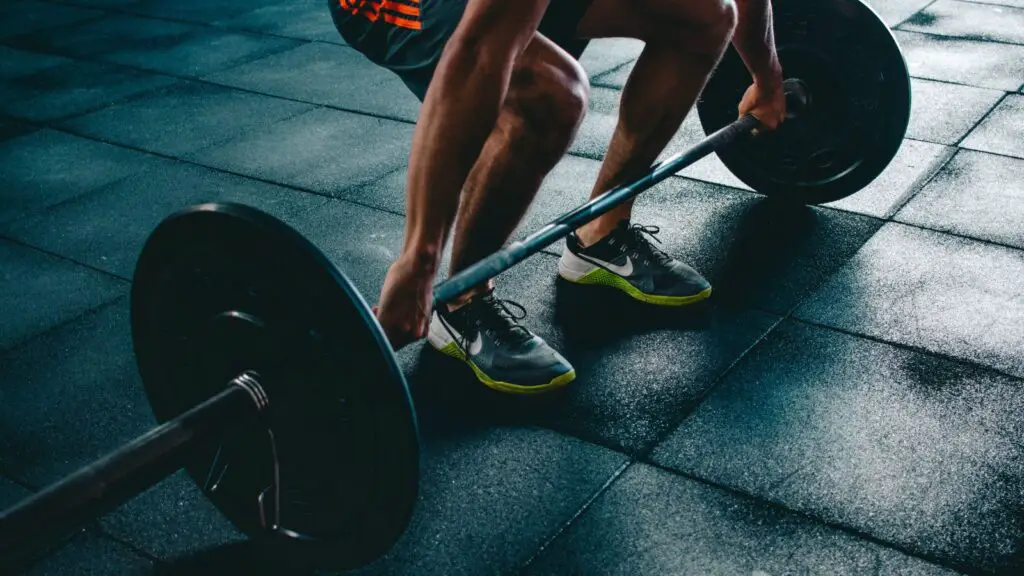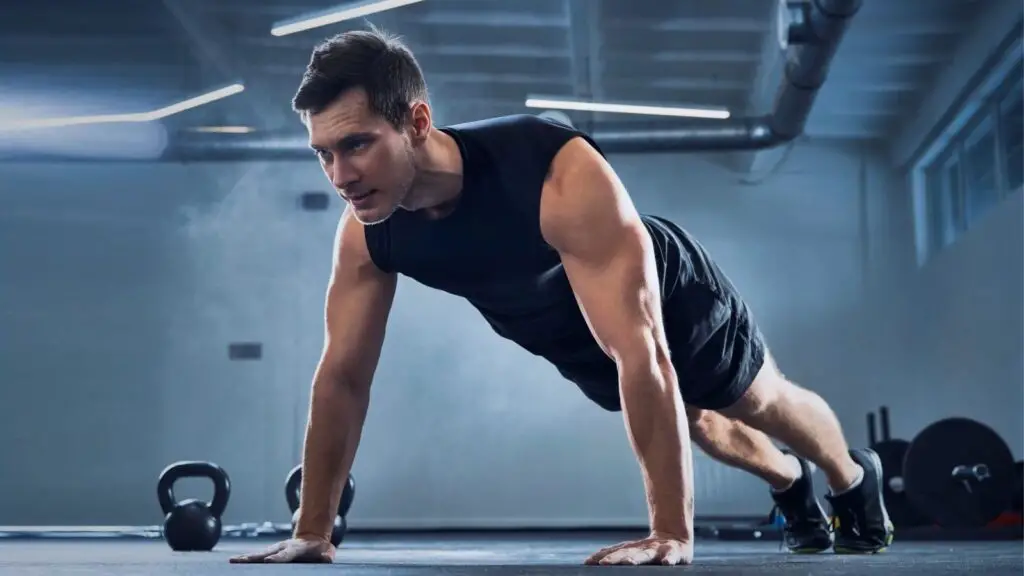Hight Intensity Interval Training (HIIT) or CrossFit?
Both training programmes are known for their intense workout structure, improving overall fitness levels.
HIIT is more flexible and adaptable, while CrossFit is a more structured program that encompasses a broader range of physical demands.
Which is better suited to you?
In this article we break down HIIT vs CrossFit, discussing the similarities and differences between the two.
What are the similarities?
High-Intensity Interval Training (HIIT) and CrossFit share some similarities, as they both involve high-intensity exercise and can improve cardiovascular fitness.
Here are the key similarities between HIIT and CrossFit:
- High Intensity: Both HIIT and CrossFit are characterized by high-intensity workouts. They involve pushing your body to work at or near its maximum capacity for short bursts of time.
- Short Duration: HIIT and many CrossFit workouts are typically of shorter duration compared to traditional, steady-state cardio workouts. This makes them time-efficient and suitable for individuals with busy schedules.
- Variability: Both workouts incorporate a variety of exercises and movements. They can involve bodyweight exercises, weightlifting, cardiovascular exercises, and other functional movements.
- Scalability: They can be adapted to different fitness levels. HIIT workouts can be modified to suit beginners or advanced athletes. CrossFit also promotes scaling workouts to accommodate individuals of varying fitness levels.
- Functional Fitness: Both approaches emphasize functional movements that can have real-world applications. This means they aim to improve overall physical fitness and functional strength.
- Challenge and Intensity: HIIT and CrossFit workouts challenge participants to work at high intensities, pushing their physical limits. This can lead to improved cardiovascular endurance, strength, and power.
- Community and Group Workouts: While not exclusive to either method, both HIIT and CrossFit often involve group workouts or a community aspect, which can provide motivation, camaraderie, and accountability.
- Efficiency: HIIT and CrossFit are known for providing effective workouts in a relatively short amount of time. This can be appealing to individuals seeking time-efficient training options.
- Metabolic Benefits: Both HIIT and CrossFit have the potential to boost metabolism and increase calorie burn not only during the workout but also in the post-exercise period (known as the afterburn effect).
Your choice between HIIT and CrossFit should depend on your fitness goals, preferences, and the type of workout experience you are looking for.
What are the differences?
It’s important to note that while they share similarities, HIIT and CrossFit are distinct approaches with different structures, training methodologies, and objectives.

Here’s a comparison between HIIT and CrossFit:
High-Intensity Interval Training (HIIT)
- Definition: HIIT is a workout method that involves short bursts of very intense exercise followed by brief periods of rest or lower-intensity exercise.
- Structure: HIIT workouts are typically shorter in duration, often lasting 15-30 minutes. They can be performed with various exercise modalities, including running, cycling, bodyweight exercises, or resistance training.
- Objective: The primary goal of HIIT is to increase cardiovascular fitness, burn calories, and improve overall metabolic health. It can also be adapted for different fitness levels.
- Variability: HIIT is flexible, allowing you to customize the duration, intensity, and exercises to fit your fitness level and goals. It can be done with minimal equipment.
- Intensity: HIIT is characterized by extremely high-intensity intervals, often near maximum effort, followed by rest or lower-intensity periods for recovery.
CrossFit
- Definition: CrossFit is a branded fitness program and competitive sport that incorporates a variety of functional movements performed at high intensity.
- Structure: CrossFit workouts, often referred to as “WODs” (Workouts of the Day), vary in length but are generally longer and more structured than typical HIIT sessions. They involve a combination of exercises performed for time or repetitions.
- Objective: CrossFit aims to improve overall physical fitness by developing various domains, including strength, endurance, power, speed, agility, and more. It’s commonly used as a competitive sport as well.
- Variability: It’s also known for its constantly varied workouts that challenge participants in different ways, and it often incorporates Olympic weightlifting, powerlifting, and gymnastics movements.
- Community: CrossFit places a strong emphasis on the community aspect, with participants often working out in groups and following the same WODs for a sense of camaraderie and motivation.
- Certified Trainers: CrossFit affiliates are typically staffed by certified trainers, who help participants with proper form and technique and ensure that workouts are scaled to individual fitness levels.
- Competitive Aspect: There’s competitive elements to CrossFit, including the annual CrossFit Games, where elite athletes from around the world compete in various exercises and workouts.
- Equipment: CrossFit workouts often require access to specific equipment, such as barbells, kettlebells, rowing machines, and more. Many CrossFit gyms are well-equipped with a wide range of fitness tools.
In summary, while both HIIT and CrossFit involve high-intensity exercise, they have distinct structures.
HIIT is more flexible, with a focus on short bursts of intense activity to improve cardiovascular fitness and burn calories.
CrossFit, on the other hand, is a structured and competitive program that encompasses a broader range of physical fitness domains and often involves a specific community-oriented approach.
Target muscle
High-Intensity Interval Training (HIIT) and CrossFit are training methods that focus on cardiovascular fitness, calorie burning, and overall metabolic conditioning.
They don’t specifically target individual muscle groups to the same extent as strength training or bodybuilding exercises.
However, HIIT and CrossFit can engage various muscles throughout the body due to the intense, full-body movements often involved.
The primary muscles involved in HIIT and CrossFit workouts include:
- Leg Muscles: HIIT and CrossFit frequently include exercises that involve the lower body, such as squats, lunges, and jumping exercises. This engages several leg muscles, the quadriceps, hamstrings, glutes, and calves.
- Core Muscles: Many HIIT and CrossFit exercises require core stability and engagement to maintain proper form and balance. This targets the rectus abdominis, obliques, and deep core muscles.
- Upper Body Muscles: Some workouts incorporate upper body movements, including push-ups, burpees, and mountain climbers. These engage the chest, shoulders, triceps, and back muscles.
- Cardiovascular System: The primary objective of HIIT and CrossFit is to elevate heart rate and engage the cardiovascular system, improving overall cardiovascular fitness and endurance.
- Calorie Burning: Both workouts are highly effective at burning calories and promoting fat loss. The intense nature of the workouts leads to an increased metabolic rate and fat utilization.
- Total-Body Engagement: HIIT and CrossFit often involve total-body movements, which require coordination and engagement of multiple muscle groups simultaneously.
While HIIT and CrossFit do engage various muscle groups, they are not a replacement for strength training or targeted muscle-building exercises.

Instead, they complement a balanced fitness routine by improving cardiovascular fitness, burning calories, and promoting overall health.
Incorporating a combination of resistance and strength training and HIIT into your workout routine can provide a well-rounded approach to fitness and muscle development.
How to do HIIT?
High-Intensity Interval Training (HIIT) involves alternating short bursts of intensive exercise with brief periods of low-intensity or rest. HIIT can be adapted to many exercises and can be done at all fitness levels, making it versatile.
Here’s a general guide on how to do HIIT:
1. Choose Your Exercises
Select the exercises or activities you want to include in your HIIT routine.
Common exercises include:
- sprinting
- jumping jacks
- burpees
- mountain climbers
- kettlebell swings
- cycling.
Alternatively, you can choose bodyweight exercises or use equipment like dumbbells, kettlebells, or resistance bands.
2. Warm-Up
Start with a dynamic warm-up to prepare your muscles and joints for the workout. Spend 5-10 minutes doing exercises to increase your heart rate and body temperature.
3. HIIT Structure
A basic HIIT structure consists of high-intensity intervals followed by low-intensity or rest intervals.
For beginners, a 1:2 work-to-rest ratio is a good starting point.
For example, if you work intensely for 20 seconds, take a 40-second rest. As you progress, you can reduce the rest periods or increase the work intervals.
4. Perform Intervals
Perform the high-intensity intervals with maximum effort. Push yourself as hard as you can during each interval, aiming for near maximum intensity. Use proper form to prevent injuries.
The number of intervals can vary, but 4-6 intervals are common for beginners.
5. Rest Periods
During the rest intervals, focus on active recovery. This means keeping your body moving at a lower intensity, like walking or light jogging, to prevent your heart rate from dropping too quickly.
6. Repeat
Continue alternating between high-intensity and low-intensity or rest intervals for the prescribed number of sets. The total workout duration will depend on the number of intervals and their length.
7. Cool Down
After completing the HIIT session, engage in a proper cool-down to help your heart rate and breathing return to normal.
Stretch and perform static stretches for major muscle groups to improve flexibility and reduce the risk of muscle soreness.
8. Monitor Progress
Track your HIIT workouts to monitor your progress. You can adjust the intensity, intervals, and exercises to continue challenging yourself and making progress.
Remember that HIIT can be highly intense, so it’s crucial to tailor your workouts to your fitness level and gradually increase the intensity as you become more accustomed to the training.
When should you do HIIT?
The timing of when to do High-Intensity Interval Training (HIIT) will vary based on your personal schedule, and when you can fit it in.
Here are some common times to consider incorporating HIIT into your routine:
- Morning HIIT:
- Energy Boost: A morning HIIT session can provide an energy boost and help you start your day with increased alertness and vitality.
- Metabolism Boost: Morning HIIT can kickstart your metabolism, leading to increased calorie burning throughout the day.
- Consistency: Morning workouts may be more consistent for some people, as there are fewer scheduling conflicts and distractions.
- Afternoon HIIT:
- Body Temperature: Body temperature tends to be higher in the late afternoon, which can improve exercise performance and reduce the risk of injury.
- Stress Relief: An afternoon HIIT session can serve as a stress reliever, helping you unwind and release tension after a day’s work or responsibilities.
- Social Aspect: Some people prefer to exercise with friends or at a gym in the afternoon.
- Evening HIIT:
- Time Availability: For those with busy mornings or work commitments, evening HIIT may be the most practical option.
- Performance: Evening workouts may lead to better physical performance due to increased muscle strength and coordination later in the day.
- De-Stressing: Evening HIIT can be a great way to unwind and relieve stress after a long day.
Ultimately, the best time to do HIIT is when you can commit to it consistently and when you feel the most energetic and motivated.
It’s important to listen to your body and choose a time that aligns with your daily routine and personal preferences. However, regardless of the time you choose, the most critical factor is maintaining a consistent exercise routine.
Whether you opt for morning, afternoon, or evening HIIT, regularity and adherence to your workout plan are essential for achieving your fitness goals.
Benefits of HIIT
High-Intensity Interval Training (HIIT) offers numerous benefits for physical fitness and overall health.

Here are some of the key benefits of HIIT:
- Efficient Time Use: HIIT workouts are typically shorter in duration compared to traditional steady-state cardio workouts. This makes HIIT a time-efficient option for individuals with busy schedules.
- Effective Calorie Burn: It can lead to significant calorie expenditure due to its high intensity and post-exercise oxygen consumption (EPOC) effect. This means you continue to burn calories even after the workout.
- Fat Loss: HIIT has also been shown to be effective for reducing body fat, especially abdominal fat. It can help with weight management and fat loss.
- Improved Cardiovascular Health: HIIT improves cardiovascular fitness, including aerobic capacity, VO2 max, and heart health. It can lower the risk of heart disease and improve overall cardiac function.
- Increased Metabolism: Regular HIIT can boost your metabolism, helping your body burn calories more efficiently throughout the day.
- Muscle Preservation: HIIT can help preserve muscle mass while promoting fat loss, making it more favourable for retaining lean body mass compared to traditional steady-state cardio.
- Diverse Workout Options: HIIT is highly adaptable and can include a wide range of exercises, including bodyweight exercises, strength training, and cardiovascular movements.
- Variety and Fun: HIIT offers variety in workouts, making exercise more interesting and motivating. You can change exercises and routines frequently to prevent workout plateaus.
- Afterburn Effect: HIIT workouts create an afterburn effect, where the body continues to burn calories post-workout as it recovers and restores oxygen levels.
- Minimal Equipment: Many HIIT workouts can be done with minimal equipment, making it accessible to people who prefer home workouts.
- Adaptable to Fitness Levels: HIIT can be adapted for various fitness levels. Beginners can start with less intense intervals and progressively increase intensity.
- Metabolic Health: HIIT can positively impact several aspects of metabolic health, including lipid profiles and blood pressure.
It’s important to note that HIIT can be highly intense, so it’s essential to start at a level appropriate for your fitness and gradually increase intensity as your fitness improves.
Also, consulting with a healthcare professional or fitness expert before starting a new exercise program is advisable, especially if you have any underlying health concerns.
Cons of HIIT
While High-Intensity Interval Training (HIIT) offers numerous benefits, it’s essential to be aware of potential drawbacks and cons associated with this exercise method.
Some of the cons of HIIT include:
- Risk of Injury: The high intensity and fast-paced nature of HIIT can increase the risk of injury, especially if proper form is not maintained. Common injuries can include strains, sprains, and overuse injuries.
- Not Suitable for Everyone: HIIT may not be appropriate for individuals with certain medical conditions, joint problems, or those who are new to exercise.
- Muscle Soreness: Due to the intense nature of HIIT, muscle soreness can be more pronounced, especially for beginners or when introducing new exercises or movements.
- Excessive Stress: Overdoing HIIT without adequate recovery can lead to excessive stress on the body, negatively affecting the hormonal and immune systems.
- Fatigue and Burnout: HIIT can lead to physical and mental fatigue, especially if performed too frequently or at extremely high intensities. This can contribute to exercise burnout.
- Not Ideal for Building Muscle: HIIT is primarily focused on cardiovascular fitness and calorie burning. It is not the best approach for those seeking significant muscle hypertrophy or bodybuilding gains.
- Inadequate Warm-Up: Failing to properly warm up before a HIIT session can increase the risk of injury. A thorough warm-up is essential, but it can add to the overall time spent on your workout.
- Recovery Time: HIIT sessions require sufficient recovery time between workouts, especially if they are very intense. Overtraining or not allowing the body to recover can lead to diminishing returns and possible injury.
- Not Ideal for Long-Duration Goals: If your primary goal is to improve endurance for long-duration activities (e.g., marathon running), HIIT may not be the most effective training method.
- Mental Stress: The intensity of HIIT can place additional mental stress on individuals, potentially leading to exercise-related anxiety for some.
To maximize the benefits of HIIT while minimizing the potential drawbacks, it’s crucial to exercise with proper form and include adequate rest and recovery in your routine.

Additionally, consider incorporating a well-rounded fitness program that includes strength training and maybe even some flexibility work. Try different exercises to address both your short-term and long-term fitness objectives.
How to do CrossFit?
CrossFit is a structured and intense fitness program that combines elements of strength training, cardiovascular conditioning, and functional movements. It’s typically conducted in a group or gym setting, led by certified CrossFit trainers.
Here are the general steps on how to do CrossFit:
1. Find a CrossFit Gym (Box):
- Locate a local CrossFit gym, often referred to as a “box.” These facilities are equipped with the necessary equipment and have certified CrossFit trainers to guide and coach you through workouts.
2. Start with an On-Ramp or Introductory Program:
- Many CrossFit gyms offer introductory programs or “On-Ramp” classes for beginners. These classes are designed to teach you the fundamental movements, proper form, and safety protocols used in CrossFit.
3. Consult with a Trainer:
- Before you start regular CrossFit classes, consult with a CrossFit trainer to discuss your fitness goals, any medical concerns, and your experience level. They will help you design an appropriate training plan.
4. Attend CrossFit Classes:
- Join regular CrossFit classes led by a certified trainer. These classes typically consist of a warm-up, skill or strength training portion, and a high-intensity Workout of the Day (WOD).
5. Learn CrossFit Movements:
- You’ll be introduced to various CrossFit movements and exercises, including weightlifting, bodyweight exercises, kettlebell work, Olympic lifts, and more. It’s important to focus on proper form and technique to prevent injury.
6. Follow the WOD:
- The Workout of the Day (WOD) is a key component of CrossFit. Each day, there is a specific workout that participants complete.
- WODs can vary in duration and intensity. The trainer will guide you through the WOD, and participants often cheer each other on to complete the workout.
7. Scale Workouts as Needed:
- CrossFit workouts can be scaled or modified to match your fitness level. Trainers will help you select appropriate weights, movements, and reps based on your abilities.
8. Stay Consistent:
- Consistency is key in CrossFit. Regular attendance is crucial to improving your fitness and achieving your goals. CrossFit promotes a strong sense of community, which can help with accountability.
9. Listen to Your Body:
- CrossFit can be intense, and it’s important to pay attention to how your body responds. Rest and recovery are essential to prevent overtraining and injury.
10. Track Your Progress:
- Keep a log of your workouts, including weights, times, and repetitions, to track your progress and set new goals.
11. Participate in Challenges and Competitions:
- CrossFit often hosts challenges and competitions that provide opportunities to test your skills and push your limits. Many CrossFit enthusiasts enjoy the competitive aspect of the program.
Remember, CrossFit can be physically demanding, so it’s essential to start at a level that matches your fitness. Then you can gradually increase intensity as you become more accustomed to the training.
When should you do CrossFit?
CrossFit classes are typically offered by CrossFit gyms at various times throughout the day, which can include early morning, mid-morning, afternoon, and evening classes.
The best time to do CrossFit depends on your personal preferences, daily schedule, and individual factors.
Here are some considerations for choosing the right time to do CrossFit:
- Morning CrossFit:
- Energy Boost: Morning CrossFit can provide an energy boost to start your day with increased alertness and vitality.
- Consistency: If you’re a morning person, you may find it easier to be consistent with morning workouts because there are typically fewer scheduling conflicts.
- Lunchtime CrossFit:
- Break from Work: A midday CrossFit session can serve as a break from work or daily responsibilities, helping to clear your mind and reduce stress.
- Energy Recharge: It can re-energize you for the rest of the day.
- Afternoon CrossFit:
- Body Temperature: Body temperature tends to be higher in the late afternoon, which can improve exercise performance and reduce the risk of injury.
- Convenience: For some, working out in the afternoon after work or school may be more convenient and fit into their daily routine.
- Evening CrossFit:
- Time Availability: If you have a busy morning and afternoon, or if your work schedule allows for evening workouts, this may be the most practical option.
- Performance: Some people find that they perform better physically during evening workouts due to increased muscle strength and coordination later in the day.
Some CrossFit gyms offer more class options during specific times of the day. Consider when classes are available and when you can join group sessions if you value the community aspect of CrossFit.
It’s essential to select a time that aligns with your daily routine and personal preferences to ensure consistency. Regardless of the time you choose, the most critical factor is adhering to a regular exercise routine.
Benefits of CrossFit
CrossFit is a high-intensity fitness program known for its versatility and effectiveness. It offers a wide range of benefits for individuals looking to improve their physical fitness and overall health.

Some of the key benefits of CrossFit include:
- Comprehensive Fitness: CrossFit is designed to improve various components of physical fitness, including cardiovascular endurance, strength, flexibility, power, speed, agility, balance, and coordination.
- Functional Movement: CrossFit focuses on functional movements that have real-world applications, making it valuable for everyday activities and functional fitness.
- Community and Support: CrossFit gyms foster a strong sense of community and camaraderie. The group atmosphere can provide motivation, support, and a social aspect to your workouts.
- Intensity and Efficiency: CrossFit workouts are intense and often shorter in duration compared to traditional gym routines. This makes them time-efficient and effective for individuals with busy schedules.
- Constant Variation: CrossFit promotes constantly varied workouts, preventing plateaus and keeping exercise interesting and motivating.
- Nutrition Education: Many CrossFit programs include nutrition education, emphasizing the importance of a well-balanced diet to complement your fitness efforts.
- Coaching and Guidance: CrossFit classes are typically led by certified trainers who provide coaching, guidance, and supervision to ensure proper form and safety during workouts.
- Scalability: CrossFit workouts can be scaled to match individual fitness levels, making it accessible to beginners and adaptable for advanced athletes.
- Competition: CrossFit offers a competitive aspect for those interested in pushing their limits and competing against themselves and others.
- Weight Loss and Body Composition: CrossFit can lead to fat loss, muscle gain, and improved body composition, making it effective for individuals looking to lose weight and build lean muscle.
- Strength Gains: CrossFit includes weightlifting and strength training exercises, leading to improvements in muscle strength and power.
- Injury Prevention: Proper coaching and emphasis on form can help reduce the risk of injuries during CrossFit workouts.
- Mental Toughness: CrossFit can build mental toughness, discipline, and a strong work ethic as you push through challenging workouts.
- Weightlifting and Gymnastics Skills: CrossFit often incorporates Olympic weightlifting and gymnastics movements, helping individuals learn and improve these specialized skills.
It’s important to note that while CrossFit offers many benefits, it can be intense, so it’s essential to start at an appropriate fitness level and gradually increase intensity.
Additionally, consulting with a healthcare professional or certified CrossFit trainer before beginning a CrossFit program is advisable, especially if you have underlying health concerns or are new to exercise.
Cons of CrossFit
While CrossFit has many benefits, it’s essential to be aware of potential drawbacks and concerns associated with this high-intensity fitness program.
Some of the cons of CrossFit include:
- Risk of Injury: The intense and varied nature of CrossFit workouts can increase the risk of injury, particularly if proper form is not maintained during exercises or if participants push themselves too hard.
- Intense Workouts: CrossFit workouts are demanding and may not be suitable for individuals who are new to exercise, have certain medical conditions, or have mobility or joint issues.
- Overtraining: The emphasis on high-intensity workouts can lead to overtraining if participants do not allow sufficient time for recovery. Overtraining can result in physical and mental burnout.
- Lack of Personalization: CrossFit workouts are often designed for a general population and may not address individual fitness goals, needs, or limitations. Customization may be limited in group classes.
- Expense: CrossFit membership fees can be relatively high, especially when compared to traditional gym memberships.
- Competitive Environment: While competition can be motivating, some individuals may feel pressure to keep up with others in the class, which can lead to overexertion and injury.
- Focus on Speed: Some CrossFit participants prioritize speed and completing workouts quickly, potentially sacrificing proper form and safety.
- Potentially High Repetition: CrossFit workouts often involve high repetitions of exercises, which can be fatiguing and increase the risk of overuse injuries.
- Intensity and Stress: The high-intensity nature of CrossFit can be physically and mentally stressful. It may not be suitable for individuals who are looking for a more relaxed or meditative exercise experience.
- Inconsistent Quality: CrossFit gym quality can vary widely based on the trainers, equipment, and facility. It’s important to choose a reputable CrossFit gym with certified trainers.
- Potential for Overzealous Workouts: Some CrossFit enthusiasts may be tempted to push themselves to extremes, increasing the risk of injury or overtraining.
It’s important to acknowledge these potential cons and take steps to mitigate them.
Choosing a qualified CrossFit gym with certified trainers who prioritize safety, proper form, and individualized instruction can help reduce the risk of injury.
Additionally, listening to your body and not pushing beyond your limits is crucial.
FAQs
Is HIIT better than CrossFit for weight loss?
Not really. HIIT is definitely more convenient and probably easier to do for most individuals, but CrossFit is better for weight loss.
CrossFit offers a comprehensive fitness program that combines strength training, cardiovascular conditioning, and functional movements. This provides a more balanced workout, leading to improved muscle tone and fat loss.
The most important factor is choosing the exercise program that you enjoy and can commit to consistently. Consistency in exercise and a balanced diet are key for successful and sustainable weight loss.
Which one is better for beginners?
HIIT is the better option for beginners. It can easily be tailored to individual fitness level, and then adapted as you progress. It’s also shorter in duration, making it convenient for people with busy schedules.
Certain aspects of CrossFit can make it tricky for beginners to be involved, requiring proper form and technique.
It’s a good idea to consult with a healthcare professional or fitness expert to determine the most appropriate approach based on your individual fitness level and goals.
How much does CrossFit cost?
Most CrossFit gyms offer monthly membership options. Prices can range from $100 to $250 or more per month. High-demand urban areas or facilities in upscale neighbourhoods may have higher membership fees.
CrossFit can be more expensive than traditional gym memberships, it often includes structured classes led by certified trainers and a strong sense of community.
Before joining a CrossFit gym, it’s a good idea to visit the facility, talk to the coaches and members, and inquire about membership options and costs. Additionally, be clear about any cancellation policies and potential additional fees.
How long does it take for HIIT results?
It’s important to note that everyone’s body responds differently to exercise, and individual results can vary. Your genetics, starting point, diet, sleep, and stress levels all play a role in how quickly you see results.
It usually takes a few weeks to notice significant progress when doing HIIT consistently.
It’s a good practice to set realistic, sustainable goals before starting a new exercise program. This can help you create a personalized plan to track your progress and ensure you’re on the right path to achieving your fitness goals.



